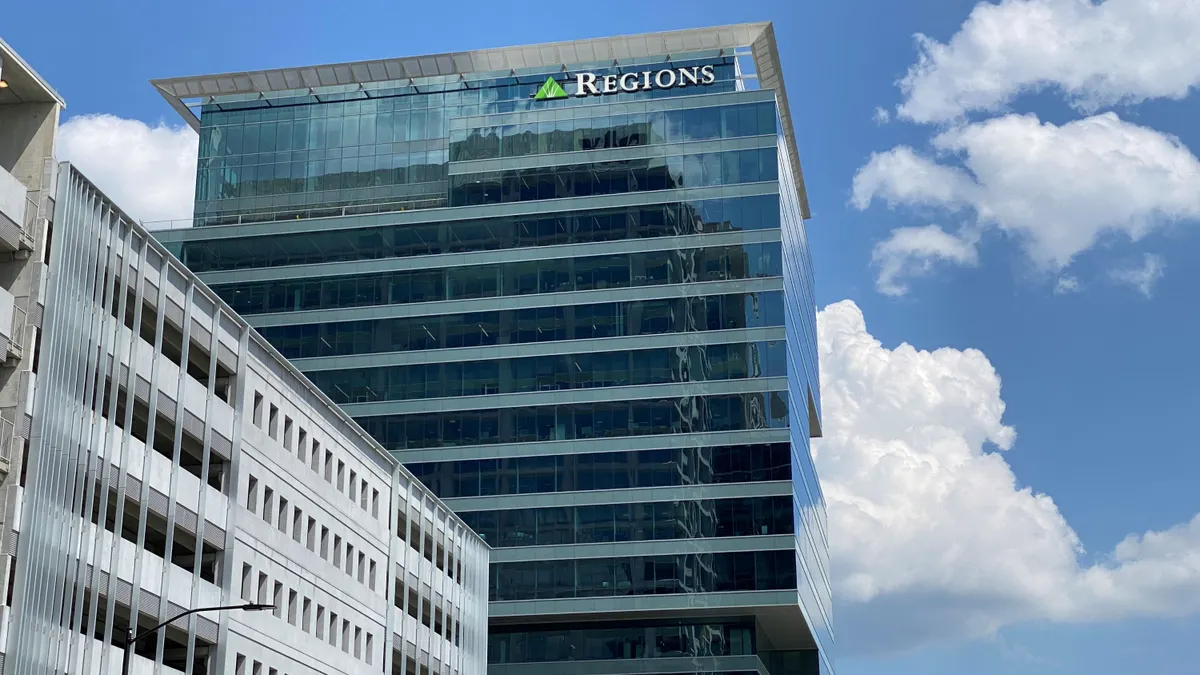Marisa Bazemore, senior public relations manager at Ally Financial, began working from home in March. The shift to remote work resulted in some unexpected surprises for her as physical meetings and phone calls became video conferences.
"It’s one thing to be in the office talking about what you did this weekend, or what your kids are up to, and it’s another thing to see people in their home environments," said Bazemore, a single mother of four. "I’ve had instances where I’ve been working on a video call and a kind of a ruckus has broken out among my boys — I might not necessarily want to be seen in that moment."
While video conferences have helped Bazemore get to know her colleagues better, they’ve required some adaptation from an employee perspective. Ally is not alone among banks that have shifted to a video-centric employee communication model in the wake of the pandemic. A reliance on the medium has introduced new challenges to bank work cultures, including video fatigue and awkwardness associated with having colleagues being able to see each other in their home environments. But banks say video culture may be here long after a return to work. For now, institutions are ironing out the kinks and using the pandemic as an opportunity to experiment with ways to make employees more comfortable with video.
"The challenge that we’re facing is Zoom exhaustion," said Kathie Patterson, Ally’s chief human resources officer. "It’s not so much the technology’s capability, but the frequency in which we’re using it, so you’re starting to see a move to, 'All right, so we’ll do a Zoom video for this type of meeting, and this [other] type of meeting can just be a standard conference call.'"
Prior to the pandemic, Ally had been using video more frequently, but current events accelerated this trend, the bank said. Within a couple of weeks of the shift to remote work, however, Ally employees began to express in surveys that a video-heavy culture was getting tiring. In response to this feedback, the bank has been working to reduce the pressure on employees to be on camera all the time.
"Sometimes face-to-(virtual) face interaction is key to achieving the collaboration you need, but sometimes a good old-fashioned phone call or email is just as effective in accomplishing your task," read a recent Ally employee intranet message. "It's [also] okay to declare Zoom meetings audio-only or encourage participants to turn on video only when speaking."
Other institutions are focusing on making video meetings more interactive. Citizens Bank said it has seen its number of video meetings jump 30% and its number of online meetings (encompassing audio and video) grow more than 70% since the beginning of the pandemic.
Although Citizens is moving employees back to physical offices depending on geography, the bank said reliance on video is still likely to continue to be a major component of its culture. To reduce stress and avoid video burnout, the bank is working to make virtual meetings more interactive and engaging.
"Some of our leaders are having walking meetings. Others have said, 'Bring your kids, or bring your pets,'" said Susan LaMonica, chief human resources officer at Citizens Bank. "I’ve had a meeting or two where I’ve had my dogs show up."
Meanwhile, challenger bank N26, which operates in 25 markets globally, is focusing on re-creating water cooler conversations through social video sessions.
"We were used to video conferencing, but always had one group that was in the majority from which the meeting was run — when everyone works remotely, they’re much more inclusive," said Eleonore van Boven, chief people officer at N26. "There's sometimes an underestimation of how much glue is needed for an organization to be successful, and the glue is in informal social interactions."
During the pandemic, N26 instituted regular check-ins with employees on video, along with virtual social hangouts called "virtual kitchens," where employees can talk informally about hobbies, children and other nonwork topics.
The COVID-19 remote work experiment has forced banks to move video meetings from an official, formal event to a medium that’s suitable for a range of employee interactions and has included employees at all levels, said Scott Wharton, vice president and general manager of the video collaboration group at Logitech, a video equipment vendor for several financial institutions.
"[Prior to the pandemic], video was a very high-end experience [for banks] and typically, it would be so complicated you needed some 'Captain Video'-type person to set it up," Wharton said.
With the rollout of tools that make it easy for employees to set up video meetings on their own, the medium is likely to become a mainstay of bank working cultures even after a return to the office, he said.
The extent of video’s impact is still yet unknown, however. Other cultural adaptations from the pandemic that are likely to stick include video interviewing for recruitment, as well as in-branch banking by appointment.
Cobalt Credit Union, which has 26 physical locations across Nebraska and Iowa, said video as a forum for employee communication may influence how staffing and organizational plans evolve.
"There's more to having people work from home than the convenience," Gail DeBoer, the credit union’s president and CEO said. "Over the next two months, it’s going to be a big part of our conversation, and we’ll probably come up with a much more flexible workplace."
Meanwhile, N26 has moved its in-person job interview process online. Once employees return to the office, the company will likely revert back to some in-person interviewing, but video is likely to become a bigger part of the recruitment process, van Boven said.
However, some institutions may be limited in their abilities to restructure because of entrenched ways of working and organizational silos, said Sudhir Suchak, assistant professor at University of Buffalo School of Management.
"It's one thing trying to get [employees] to train in areas they've never supported physically in the office, but it’s another thing trying to do it from home," Suchak said.
Despite the challenges with using video in day-to-day work, Bazemore said she feels it will positively affect bank work culture over the long term.
"It's had the effect of bringing us together and helping us get to know each other in a way that we would not have been able to do in the office," she said.

















